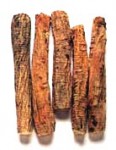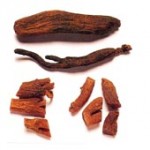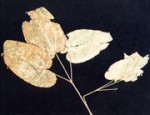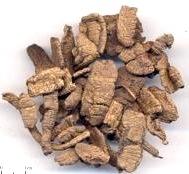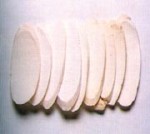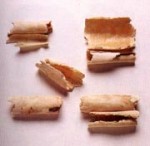Radix Codonopsis Pilosulae (Pilose Asiabell Root / Dang Shen)
Ancient medical texts include this as one of the seven “shen” which, like ginseng, have hormone-like properties in being able to regulate physiological processes.
Actions:
1. Invigorating energy in the middle warmer. Effective in invigorating the spleen, nourishing the stomach and promoting flow of energy in the middle warmer, and is often used clinically. In treating poor appetite and loose stool due to deficiency of the spleen and stomach, cough due to deficiency of the lung, shortness of breath, and deficiency of energy and weak physique due to various causes.
2. Nourishing blood and promoting production of body fluid. In treating dizziness due to deficiency of blood, sallow complexion or edema.
Radix Ginseng (Ginseng / Ren Shen)
Actions:
1. Tonify Yuan Qi and the Lungs, strengthen the Spleen and Stomach, benefit the Heart, and clam the Shen.
2. Treating medical conditions ranging from dysentery, malaria, cancer, and diabetes.
3. Improving blood circulation and reducing high blood pressure.
Herba Epimedii (Ying Yang Huo)
Actions:
1. Tonifying kidney heat energy. In treating impotence, lassitude in the low back and knee, incontinence of urine, etc.
2. Dispelling wind and removing dampness. In treating arthralgia due to wind, cold and dampness, paralysis of the lower limbs, spasm of muscles, numbness of hand and foot.
Radix Morindae Officinalis (Morinda Root / Ba Ji Tian)
Actions:
1. Tonifying kidney heat energy. In treating impotence due to deficiency of kidney heat energy infertility, deficiency and coldness of the lower warmer, coldness and pain of the hypogastrium, incontinence of urine, frequent urination. etc.
2. Strengthening muscles and bones and dispelling cold. In treating rheumatic pain of the loin and knee or myophagism and myasthenia.
Dioscorea opposita (Chinese Yam / Shan yao)
As a tonic to the digestive system, this is a common and quite palatable ingredient in soups, used year round, particularly paired with wolfberries. In its capacity to regulate the body’s sugar level, it is used in diabetes. Less well known is its role as a tonic to the male reproductive system. Ancient texts describe Chinese yam as the all-around yang counterpart to angelica.
Actions:
1. Invigorating the yang, especially of the kidneys –hence increses production of semen.
2. As a tonic to the spleen and stomach.
3. Related species contain steroid and progesterone precursors and can lower blood cholesterol and blood pressure.
Radix Glycyrrhyzae (Liquorice Root / Gan Cao)
Actions:
1. Invigorating the spleen and replenishing energy. In treating the various disease due to deficiency of energy in the spleen and stomach.
2. Dispelling phlegm and relieving cough. The drug can be used to treat cough and asthma. In treating cough due to invasion of wind-cold into the lung.
3. Relieving spasm and pain. In treating gastralgia, abdominal pain, spasm and pain of muscles.
4. Clearing away heat and removing toxin. In treating skin and external diseases, pyogenic infections, sore throat, and pesticide or food poisoning.
5. Regulating dug properties. This herb is often used in various kinds of prescriptions to reduce or modify drastic properties or toxic effect of the herbs.
Poria cocos (China Root / Fu ling)
This is the fruiting body of a mushroom which grow underground –like truffles– on the roots of certain pine trees. It occurs worldwide, particularly in Yunnan province, China, and in eastern North America where it is variously known as tuckahoe, Indian bread or Virginia truffle. It is sweet and bland in taste and mild in nature.
Actions:
1. Facilitating the movement of fluids (blood, lymph, etc.) and hence used particularly for kidney and bladder problems.
2. Improving spleen function; regulating the stomach and tranquilizing the nerves.
References: Ying, W. K. and Dahlen, Martha. Chinese Herbal Medicine. Wokman Press, 1997.


